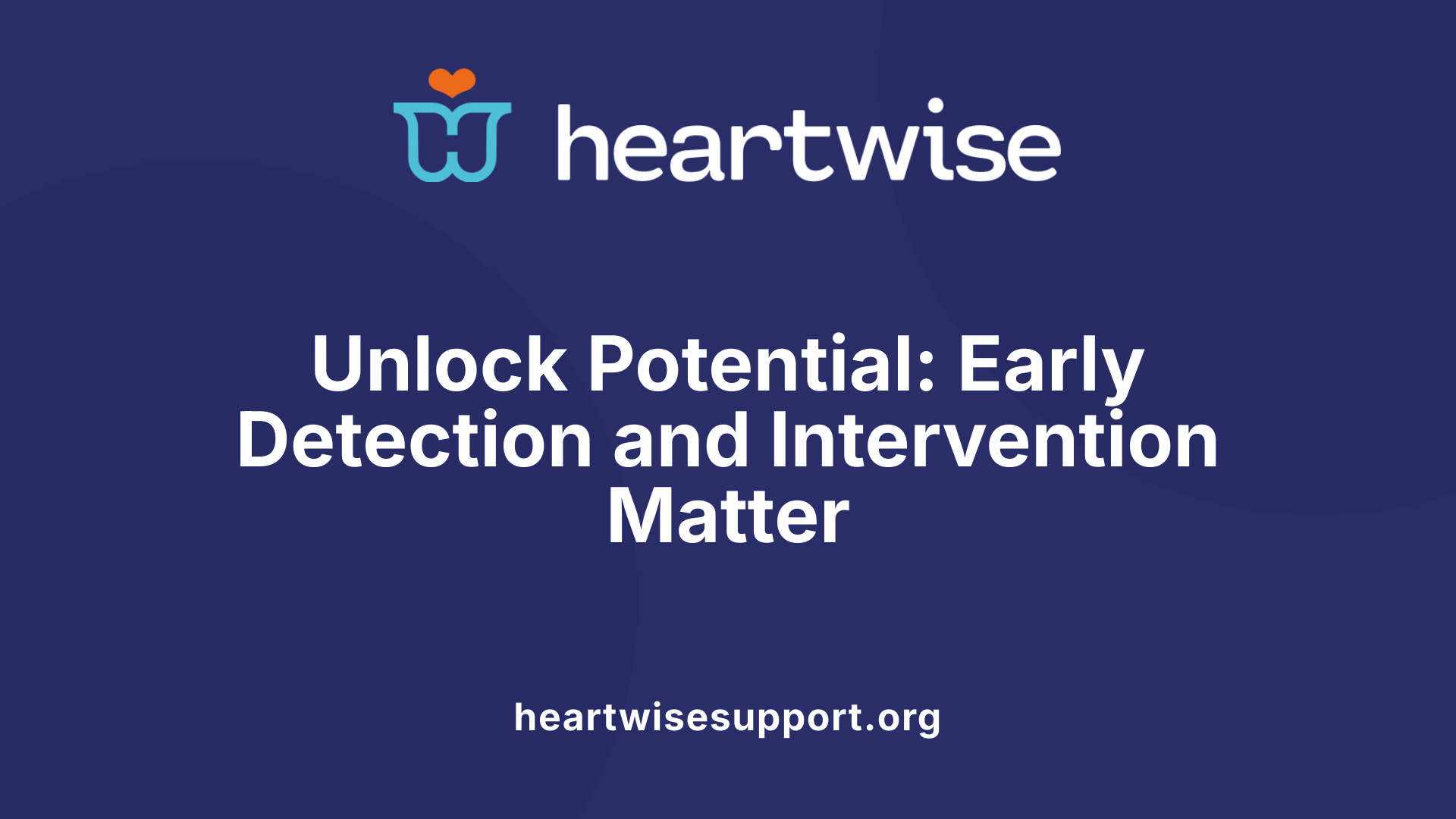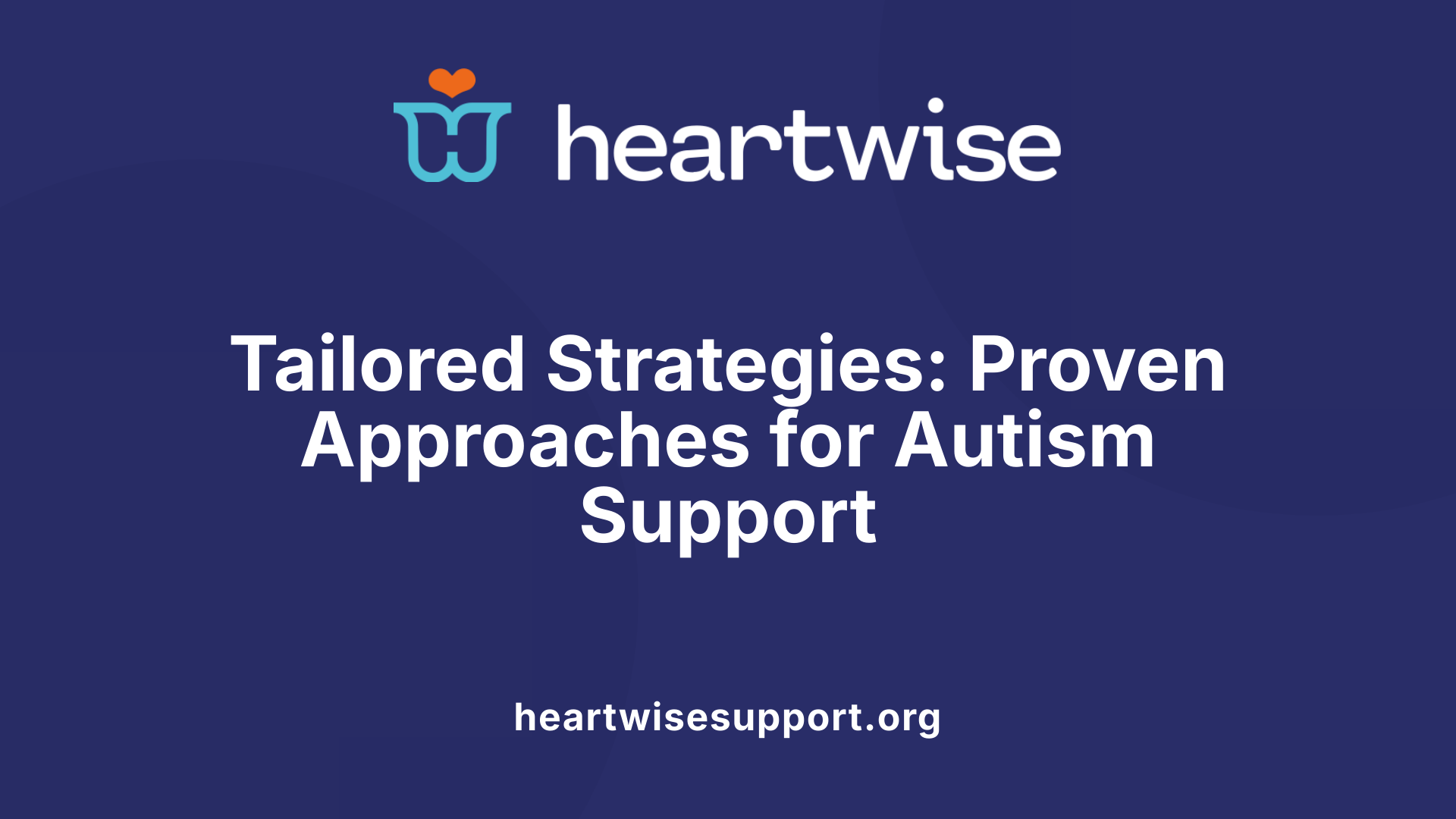The Critical Window for Autism Intervention
Early intervention in autism spectrum disorder (ASD) plays a pivotal role in shaping a child's developmental trajectory. Recognizing signs of autism as early as 12 months and initiating appropriate therapies can drastically improve long-term outcomes. Neuroplasticity, the brain's ability to reorganize itself, is most pronounced during the first few years of life, making this period especially receptive to targeted interventions. This article explores the importance of early detection, the types of interventions available, and their profound impact on children with autism.
Understanding the Optimal Age for Early Intervention

What age is appropriate for early intervention in autism?
Early intervention for autism can commence at a very young age, with many programs successfully beginning treatment as early as 6 months old. Research shows that diagnosing autism by 18 months or even earlier—using screening tools like the Modified Checklist for Autism in Toddlers (M-CHAT)—enables access to vital therapies during a period when the brain exhibits high plasticity.
Interventions such as the Early Start Denver Model and Infant Start are designed specifically for infants and toddlers, and have demonstrated meaningful improvements when implemented in children as young as 6 to 15 months old.
While traditional approaches often focus on children aged 2 to 3 years, emerging evidence suggests that starting therapy before age 2 can significantly enhance developmental outcomes. Early intervention at this stage supports foundational skills in communication, social interaction, and emotional regulation.
The overarching goal is to identify signs of autism as early as possible and begin tailored therapies that leverage the brain’s remarkable capacity for change during early childhood. Initiating intervention sooner rather than later offers the best chance to mitigate symptoms, promote learning, and positively influence a child's developmental trajectory.
Overall, the consensus among experts is clear: starting early, often before a child's second birthday, provides the most promising results in managing autism spectrum disorder and helping children achieve their full potential.
The Efficacy and Impact of Early Intervention Programs
What are the benefits of early intervention?
Early intervention is vital for children diagnosed with autism spectrum disorder (ASD) as it promotes significant developmental gains. Initiating therapy before age three capitalizes on the brain’s heightened plasticity during early childhood, making learning more effective. These benefits include improved communication skills, social engagement, cognitive abilities, and emotional regulation. Interventions focus on building core skills such as talking, walking, and interacting with others, which help children participate more fully in everyday activities.
In addition to developmental improvements, early intervention helps address challenging behaviors like tantrums and meltdowns. By teaching appropriate coping and behavioral skills, children can better manage their emotions and interactions. Family training and support are also key components, reducing parental stress and empowering families to continue supportive practices at home.
Overall, early intervention not only fosters individual growth but also enhances a child’s ability to succeed academically, socially, and independently later in life. It provides a strong foundation for community participation, including school readiness and recreational activities.
How effective is early intervention for autism?
Research consistently demonstrates that starting intervention early leads to better outcomes for children with autism. Programs like Applied Behavior Analysis (ABA) and the Early Start Denver Model (ESDM) have shown promising results, with many children experiencing reductions in autism symptoms, such as repetitive behaviors and social challenges.
Studies involving children as young as 18 months have revealed that early intervention can substantially increase IQ scores, language abilities, and social skills. For example, children undergoing intensive early therapy can improve their IQ by approximately 18 points compared to children who do not receive such early help.
Moreover, some children who begin treatment early may no longer meet criteria for autism as they grow older, especially those with higher IQs or better language and motor skills. While speech-language development shows varied results, the overall trend favors early treatment, emphasizing the importance of diagnosing and starting therapy as soon as possible.
Timing remains critical; the earlier the intervention begins, the more likely children are to maximize their developmental potential, reduce core symptoms, and prepare for a successful transition to school and social settings.
Examples of successful intervention models
Several evidence-based programs exemplify successful early intervention strategies. The Early Start Denver Model, a blend of behavioral and developmental techniques, has shown significant improvements in IQ, language, and social interaction when started around 18 months.
Another widely used approach is Applied Behavior Analysis (ABA), which targets specific behaviors and skills through reinforcement and structured teaching. ABA is the only therapy approved by the U.S. Surgeon General for autism and has a strong evidence base.
Family involvement and parent training are integral to these programs, allowing children to practice skills during routine activities at home. Visual aids, predictable routines, and breaking down complex tasks are common methods employed to enhance learning and reduce frustration.
In summary, early intervention models like ESDM and ABA demonstrate that targeted, intensive, and family-centered therapies can profoundly influence a child's developmental trajectory, improving long-term outcomes and quality of life.
| Model | Focus Areas | Age at Start | Notable Outcomes |
|---|---|---|---|
| Early Start Denver Model (ESDM) | Social, communication, learning | 18 months and older | Significant IQ, language, and social improvements |
| Applied Behavior Analysis (ABA) | Behavioral skills, communication | As early as 18 months | Reduced symptoms, improved social skills, learning capacity |
| Developmental Approaches | Play, relationship-building | Under 3 years | Enhanced emotional regulation, social interaction |
Strategies and Approaches in Early Autism Intervention

What strategies are used in early intervention for autism?
Early intervention for autism involves a variety of targeted, evidence-based strategies designed to support developmental progress in children. These approaches are tailored to each child's unique needs and focus on improving communication, social interaction, cognitive skills, and behavior.
One of the most prominent methods is Applied Behavior Analysis (ABA), which uses positive reinforcement to teach new skills and reduce challenging behaviors. ABA can be delivered through naturalistic and child-led activities that encourage learning in everyday contexts.
Additionally, programs like the Early Start Denver Model (ESDM) combine behavioral techniques with developmental and relationship-based approaches. ESDM emphasizes play and parent training, enhancing social and language skills from a very young age.
Discrete Trial Training (DTT) and Pivotal Response Training (PRT) are other behavioral strategies used to target specific skills or behaviors systematically.
Developmental and social-relational approaches like Floor Time encourage children to explore their interests and build affective relationships by engaging in activities that naturally promote communication and emotional bonds.
Visual supports play a significant role in early intervention as well. Techniques such as visual schedules, picture communication aids, and structured routines help children understand expectations and engage more effectively.
Programs like TEACCH focus heavily on visual cues and structured environments to facilitate independence and learning.
Incorporating family involvement and training is also essential. Parents learn to apply strategies at home, reinforcing skills and creating a consistent, supportive environment.
Overall, early intervention combines these adaptable, evidence-based strategies in a personalized way to promote optimal development and improve long-term functioning.
The Role of Early Detection in Shaping Developmental Outcomes

How does early detection and intervention support developmental progress in children with autism?
Early detection and intervention are crucial for supporting the developmental progress of children with autism. Signs of autism can sometimes be observed as early as 9 to 12 months, making early screening essential. Tools like developmental surveillance and screening methods such as the Modified Checklist for Autism in Toddlers (M-CHAT) help identify potential concerns during routine check-ups.
When signs like delayed speech, unusual language features, or resistance to social engagement appear, parents are encouraged to seek evaluations promptly. Identifying autism as early as 12 to 18 months allows for the initiation of targeted therapies during the brain’s most receptive period—when neuroplasticity is at its peak.
Interventions such as speech therapy, occupational therapy, behavioral approaches like Applied Behavior Analysis (ABA), and social skills training support key developmental areas including communication, social interaction, and emotional regulation. These interventions are often most effective when started before age 3.
Family involvement is a vital component, with parent training helping caregivers reinforce learned skills at home. Early, child-centered treatment plans promote meaningful gains in social, cognitive, and adaptive skills, leading to increased independence and better long-term outcomes.
In summary, early detection paired with immediate intervention optimizes developmental trajectories, reduces challenges, and can even result in children no longer on the autism spectrum as they grow older. The earlier the support begins, the more likely children are to reach their full potential and lead more independent, fulfilling lives.
Building a Foundation for a Brighter Future
The collective evidence underscores the crucial importance of early diagnosis and intervention in autism spectrum disorder. Initiating appropriate therapies during the brain's most adaptable period offers the best opportunity for children to develop vital social, communication, and cognitive skills. Early intervention not only improves immediate developmental outcomes but also lays the groundwork for greater independence and a better quality of life in later years. Families, healthcare providers, and educators must prioritize early screening and access to tailored, evidence-based interventions to maximize each child's potential. With continued research and widespread availability of early support services, we can significantly alter the developmental trajectories of children with autism, helping them thrive in society.
References
- Early Intervention for Autism | NICHD
- 5 Benefits of Early Intervention for Autism - LEARN Behavioral
- Accessing Services for Autism Spectrum Disorder - CDC
- Importance of Early Intervention in Reducing Autistic Symptoms and ...
- Early Intervention - UNC Autism Research Center
- The value of early intervention for children with autism - ScienceDirect
- Understanding The Significant Impact Of Early Intervention











